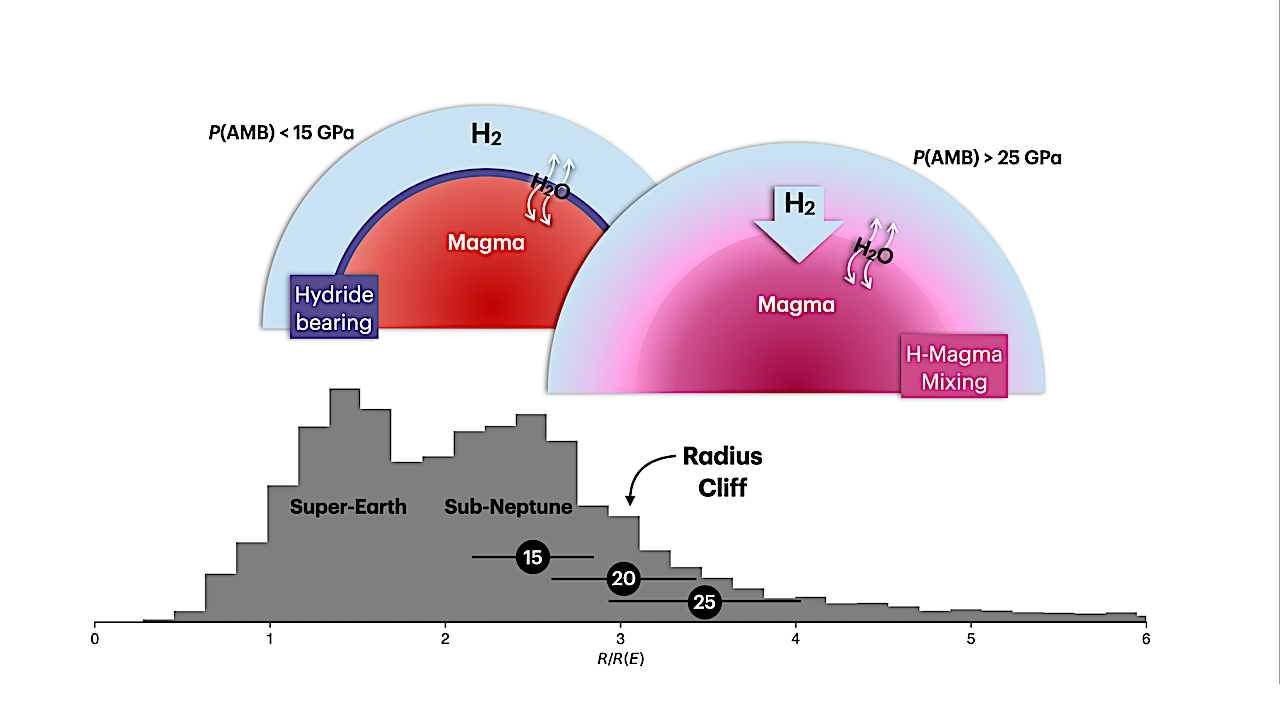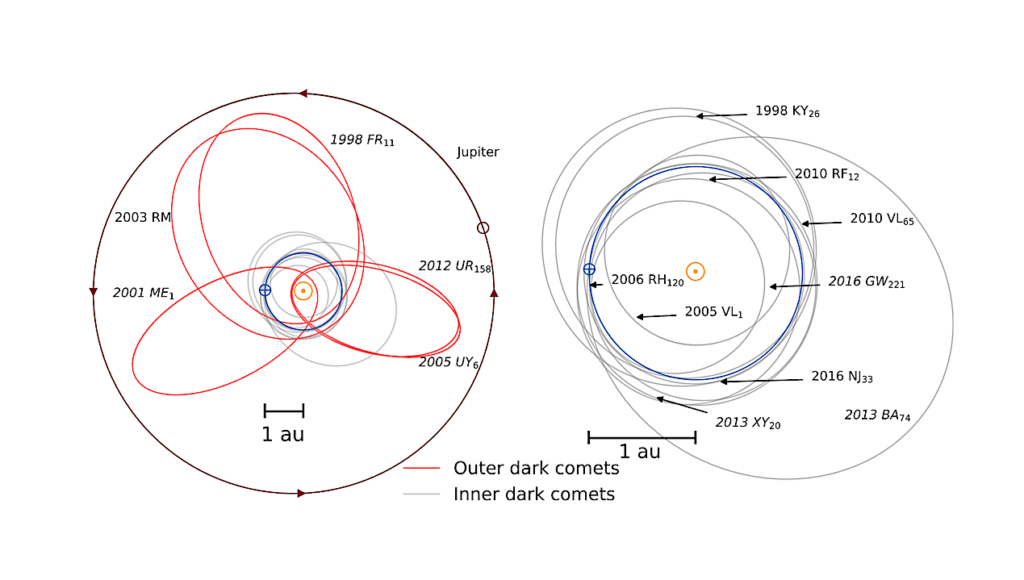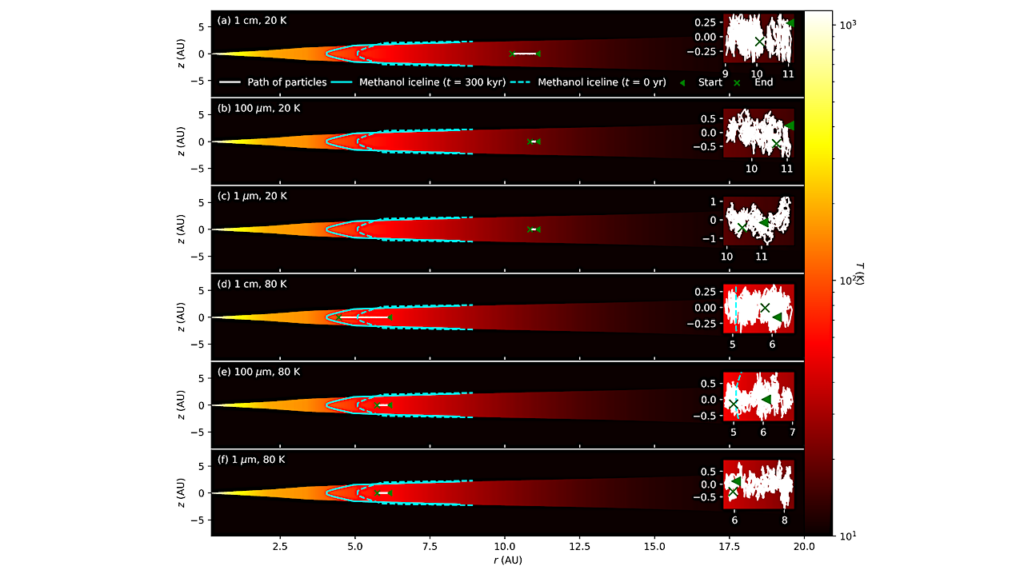Stability Of Hydrides In Sub-Neptune Exoplanets With Thick Hydrogen-Rich Atmospheres

Many sub-Neptune exoplanets have been believed to be composed of a thick hydrogen-dominated atmosphere and a high-temperature heavier-element-dominant core.
From an assumption that there is no chemical reaction between hydrogen and silicates/metals at the atmosphere-interior boundary, the cores of sub-Neptunes have been modeled with molten silicates and metals (magma) in previous studies. In large sub-Neptunes, pressure at the atmosphere-magma boundary can reach tens of gigapascals where hydrogen is a dense liquid.
A recent experiment showed that hydrogen can induce the reduction of Fe2+ in (Mg,Fe)O to Fe0 metal at the pressure-temperature conditions relevant to the atmosphere-interior boundary. However, it is unclear if Mg, one of the abundant heavy elements in the planetary interiors, remains oxidized or can be reduced by H.
Our experiments in the laser-heated diamond-anvil cell found that heating of MgO + Fe to 3500-4900 K (close to or above their melting temperatures) in a H medium leads to the formation of Mg2FeH6 and H2O at 8-13 GPa. At 26-29 GPa, the behavior of the system changes, and Mg-H in an H fluid and H2O were detected with separate FeHx.
The observations indicate the dissociation of the Mg-O bond by H and subsequent production of hydride and water. Therefore, the atmosphere-magma interaction can lead to a fundamentally different mineralogy for sub-Neptune exoplanets compared with rocky planets.
The change in the chemical reaction at the higher pressures can also affect the size demographics (i.e., “radius cliff”) and the atmosphere chemistry of sub-Neptune exoplanets.
Taehyun Kim, Xuehui Wei, Stella Chariton, Vitali B. Prakapenka, Young-Jay Ryu, Shize Yang, Sang-Heon Shim
Subjects: Earth and Planetary Astrophysics (astro-ph.EP); Materials Science (cond-mat.mtrl-sci)
Cite as: arXiv:2401.02637 [astro-ph.EP] (or arXiv:2401.02637v1 [astro-ph.EP] for this version)
Journal reference: Proceedings of the National Academy of Sciences 120, no. 52 (2023): e2309786120
Related DOI:
https://doi.org/10.1073/pnas.2309786120
Focus to learn more
Submission history
From: Sang-Heon Shim
[v1] Fri, 5 Jan 2024 05:02:48 UTC (1,397 KB)
https://arxiv.org/abs/2401.02637
Astrobiology, Astrochemistry,








